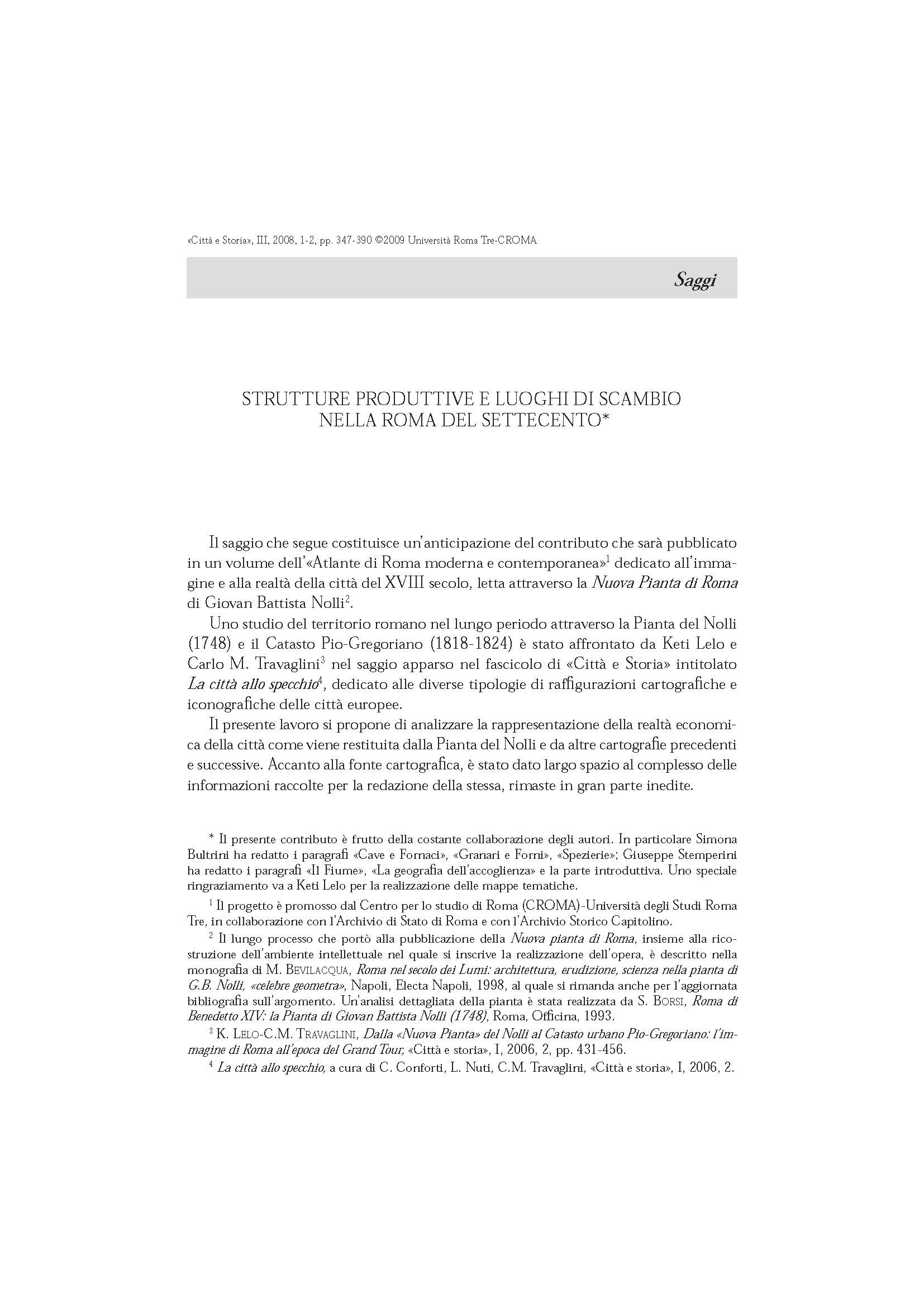Strutture produttive e luoghi di scambio nella Roma del Settecento
6,00 €
This study shows that, compared to previous cartographies, Giovan Battista Nolli’s Nuova Pianta di Roma, published in 1748, proposes a different formulation. His cartography, while planned for historic-antiquarian purposes, dedicates ample space to the city’s existing production and market structures. Indeed, it represents those activities connected to the river – ports and customs houses, floating mills and ferries – and those that had importance for the city’s economic life, although situated outside the city walls, such as quarries and kilns.
This paper, moreover, analyses several types of services present in mid-eighteenth century Rome based on an unpublished manuscript preserved in the Biblioteca Casanatense in Rome. This manuscript, which includes a wide range of information assembled according to categories – monuments, religious buildings, charitable and administrative institutions – about the city – was compiled by a group of scholars with the intention of publishing the companion Book to Nolli’s Nuova Pianta di Roma. Additional categories are included – businesses directed more specifi cally to travelers and residents, such as apothecaries, bakeries and hotels. The purpose of this project is to reconstruct the network of services available to residents and travelers by way of thematic maps, in an attempt to restore the image of the city that a qualified group of scholars wished to offer the educated public of the period.
This study shows that, compared to previous cartographies, Giovan Battista Nolli’s Nuova Pianta di Roma, published in 1748, proposes a different formulation. His cartography, while planned for historic-antiquarian purposes, dedicates ample space to the city’s existing production and market structures. Indeed, it represents those activities connected to the river – ports and customs houses, floating mills and ferries – and those that had importance for the city’s economic life, although situated outside the city walls, such as quarries and kilns.
This paper, moreover, analyses several types of services present in mid-eighteenth century Rome based on an unpublished manuscript preserved in the Biblioteca Casanatense in Rome. This manuscript, which includes a wide range of information assembled according to categories – monuments, religious buildings, charitable and administrative institutions – about the city – was compiled by a group of scholars with the intention of publishing the companion Book to Nolli’s Nuova Pianta di Roma. Additional categories are included – businesses directed more specifi cally to travelers and residents, such as apothecaries, bakeries and hotels. The purpose of this project is to reconstruct the network of services available to residents and travelers by way of thematic maps, in an attempt to restore the image of the city that a qualified group of scholars wished to offer the educated public of the period.

